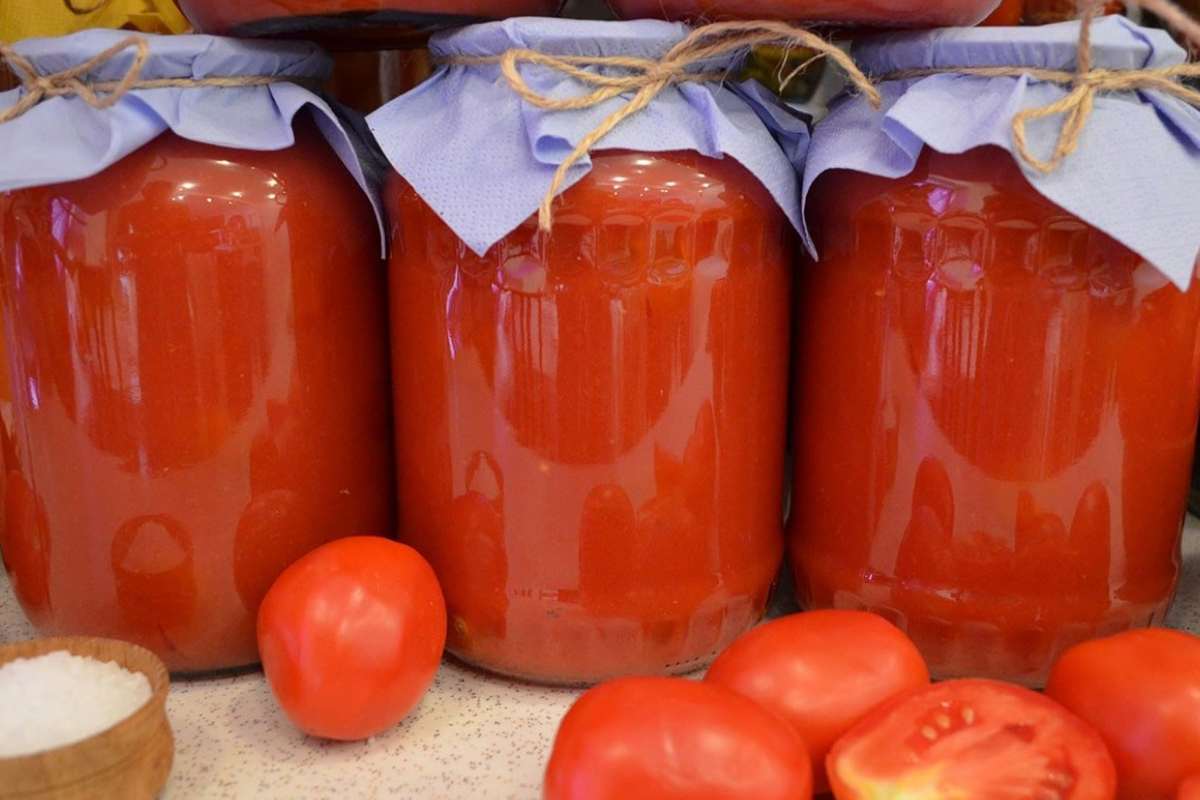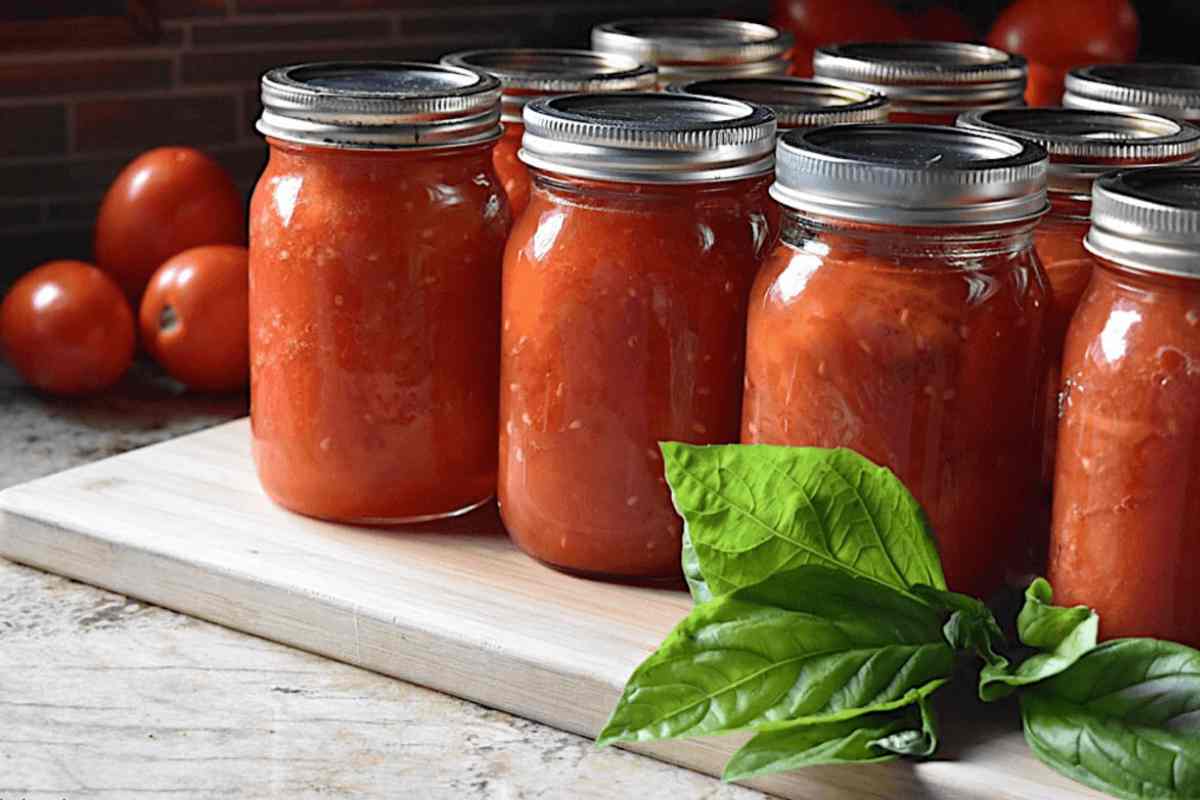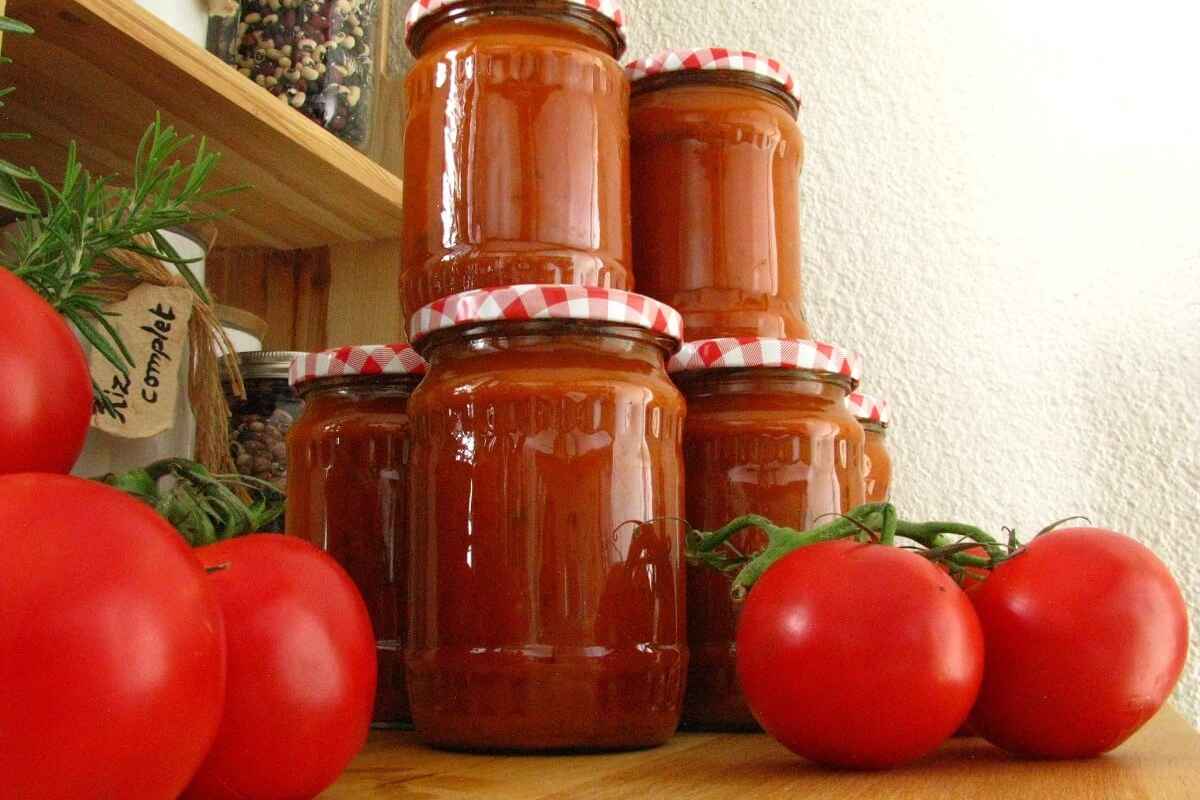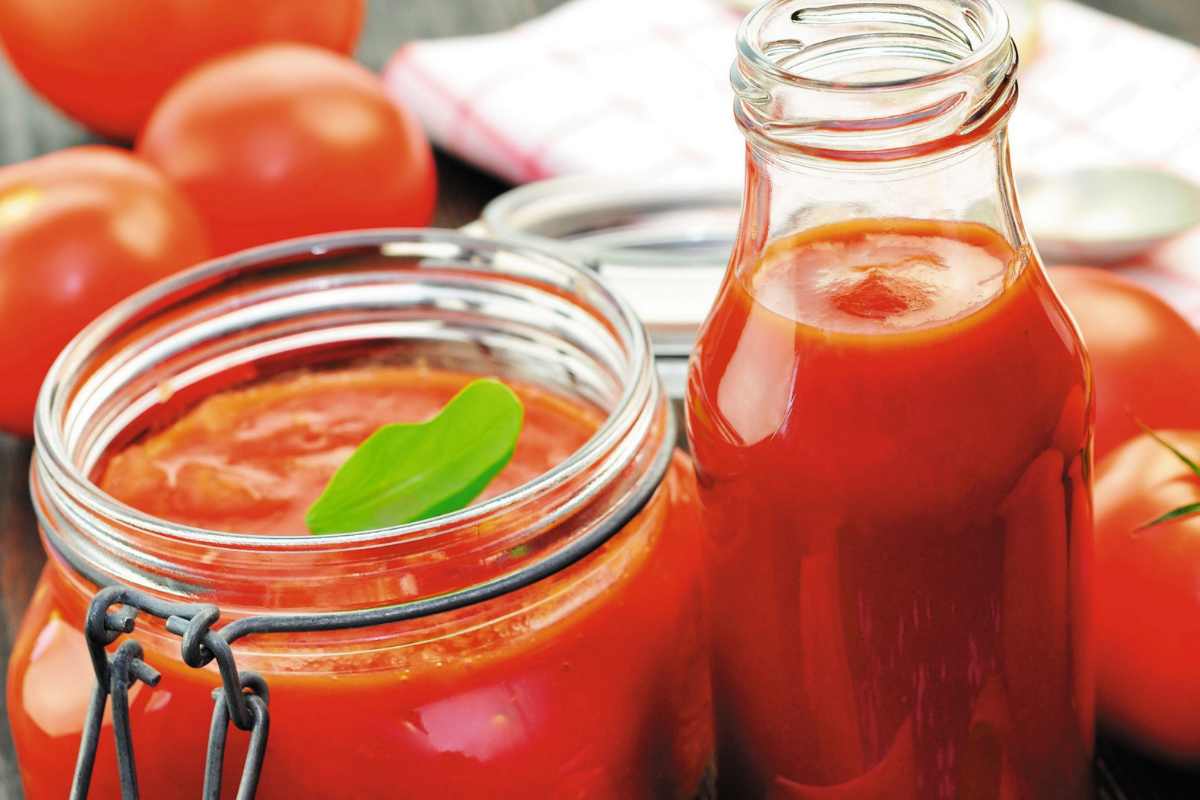There are many different types of methods for packaging some products such as tomato paste. How many different kinds of jars are there for tomato paste? There are many magazine articles, trade fairs, commercial product leaflets, and other types of marketing materials that promote the various packaging options available for tomato paste. The tapered 220-liter steel drum, which is available from the majority of local drum makers, is the most common storage container for tomato paste in the regions of production that are located in Europe and the Mediterranean. IBCs, or intermediate bulk containers, have also been utilized, albeit on a much more limited scale, for a considerable amount of time. In this regard, plywood 1.200-kg bins have been relatively common in the United States of America practically ever since the advent of aseptic barrier bags. It is possible to say that while the steel tapered drum with a capacity of 220 liters is more or less the standard in Europe, the plywood box with a capacity of 1,200 kilograms is the standard in the United States of America, despite the fact that 200-liter units are also widely used in that country. Over the course of the previous few years, numerous IBCs have become available for purchase on the European market. The majority of the promotional material for these is, for the most part, structured around a comparison with steel drums. On the other hand, many of these comparisons are deceptive, which is why it is timely to put the steel tapered drum back into context. An abbreviated history In 1983, Rheem Safim in Melzo, which is located in Italy, began producing steel tapered drums. Initially, a version with a capacity of 220 liters was produced and had the same diameter as a conventional cylindrical open head drum. After some time had passed, the common tapered 194 l containerizeable version was finally introduced. A model with 194 l capacity was also produced by Van Leer in Portugal around the same time as the model described above. Following the acquisition of Rheem Safim in 1987, Van Leer established itself as the only producer of steel tapered drums in Europe. At that time, the application of this particular product for tomato paste was not nearly as widespread as it is today. In the year 1990, Van Leer established production facilities in Turkey as well as Greece, and these two locations simultaneously began producing conical drums. Conical drums have been manufactured by a variety of other drum makers over the course of their history, the most recent of which was in Egypt by the local Van Leer company, which also began manufacturing them. This drum appears to be a product that is relatively simple to manufacture at this point in time. This is not completely accurate, and a significant amount of research and development work has been put in to get to this point. The process of expanding steel for conical drums is not a simple one, and it pushes the limits of what is possible with the technology that is currently available in this field. A significant amount of time has been invested in the design of tools, expansion patterns, and other related topics. The internal coating was yet another component that called for a great deal of focus and care. Even though the internal coat does not come into direct contact with the product itself, it must still fulfill a great number of specific requirements.
An abbreviated history In 1983, Rheem Safim in Melzo, which is located in Italy, began producing steel tapered drums. Initially, a version with a capacity of 220 liters was produced and had the same diameter as a conventional cylindrical open head drum. After some time had passed, the common tapered 194 l containerizeable version was finally introduced. A model with 194 l capacity was also produced by Van Leer in Portugal around the same time as the model described above. Following the acquisition of Rheem Safim in 1987, Van Leer established itself as the only producer of steel tapered drums in Europe. At that time, the application of this particular product for tomato paste was not nearly as widespread as it is today. In the year 1990, Van Leer established production facilities in Turkey as well as Greece, and these two locations simultaneously began producing conical drums. Conical drums have been manufactured by a variety of other drum makers over the course of their history, the most recent of which was in Egypt by the local Van Leer company, which also began manufacturing them. This drum appears to be a product that is relatively simple to manufacture at this point in time. This is not completely accurate, and a significant amount of research and development work has been put in to get to this point. The process of expanding steel for conical drums is not a simple one, and it pushes the limits of what is possible with the technology that is currently available in this field. A significant amount of time has been invested in the design of tools, expansion patterns, and other related topics. The internal coating was yet another component that called for a great deal of focus and care. Even though the internal coat does not come into direct contact with the product itself, it must still fulfill a great number of specific requirements.  These requirements focus primarily on the internal coat's ability to withstand changes in temperature and humidity as well as liquids used for sterilization. Another significant challenge is the performance of stacking. The market calls for open-air storage that is four stories high, and at the same time, the price of the drum has to stay competitive enough to be appealing. Finding the optimal combination of drum design, steel thickness, and other factors has required a significant amount of labor. Another crucial aspect to consider is handling. The palletizing of conical drums on a larger scale is not difficult for the drum makers. The increased frequency of depalletizing by users is a source of problems. Van Leer, in collaboration with a number of suppliers of equipment, has developed a number of devices for tipping over and depalletizing, which are now utilized by the vast majority of food manufacturers. Additionally, the company has played a significant role in the development of drum emptying and tip-over systems that are tailored specifically for reprocessors. Drums can be emptied using one of the many different types of equipment that are available today. In comparison to the traditional steel covers that have a closing ring, the majority of modern drums have plastic covers, which results in a significant reduction in the overall cost of the product. This one seems to be a straightforward mechanism as well. When taking into consideration the fact that the package is subjected to significant temperature changes, it is not a simple technical accomplishment to create a plastic cover that not only fits well but also can be removed without much effort. The introduction of the containerize able model with a capacity of 220 liters in 1997 was a very significant step in the right direction. This model reduced the amount of effort required to manipulate containers and reduced the cost of transporting goods. It is now widely used and can be considered the new standard in Europe. Different ways to package tomato paste Most things on the market today come in different designs and packages. They bring in a lot of customers. Of course, a product with an elegant design must also have good quality inside. However, there may be some products that only have a nice look, but the quality of the product itself is very average. The value of paste packaging for mold prevention
These requirements focus primarily on the internal coat's ability to withstand changes in temperature and humidity as well as liquids used for sterilization. Another significant challenge is the performance of stacking. The market calls for open-air storage that is four stories high, and at the same time, the price of the drum has to stay competitive enough to be appealing. Finding the optimal combination of drum design, steel thickness, and other factors has required a significant amount of labor. Another crucial aspect to consider is handling. The palletizing of conical drums on a larger scale is not difficult for the drum makers. The increased frequency of depalletizing by users is a source of problems. Van Leer, in collaboration with a number of suppliers of equipment, has developed a number of devices for tipping over and depalletizing, which are now utilized by the vast majority of food manufacturers. Additionally, the company has played a significant role in the development of drum emptying and tip-over systems that are tailored specifically for reprocessors. Drums can be emptied using one of the many different types of equipment that are available today. In comparison to the traditional steel covers that have a closing ring, the majority of modern drums have plastic covers, which results in a significant reduction in the overall cost of the product. This one seems to be a straightforward mechanism as well. When taking into consideration the fact that the package is subjected to significant temperature changes, it is not a simple technical accomplishment to create a plastic cover that not only fits well but also can be removed without much effort. The introduction of the containerize able model with a capacity of 220 liters in 1997 was a very significant step in the right direction. This model reduced the amount of effort required to manipulate containers and reduced the cost of transporting goods. It is now widely used and can be considered the new standard in Europe. Different ways to package tomato paste Most things on the market today come in different designs and packages. They bring in a lot of customers. Of course, a product with an elegant design must also have good quality inside. However, there may be some products that only have a nice look, but the quality of the product itself is very average. The value of paste packaging for mold prevention The types of paste packaging used in the first stage are in accordance with accepted standards because the intended container is entirely filled, there is no air inside, and it has been sterilized to prevent microbial contamination. As a result, during transportation and storage up until the point of opening the paste packaging, no health issues arise. However, the client could have issues like mold after opening the door and when using. The design of paste packaging can be used to address this issue in a number of ways, including: The package should be disposable and compact in size. The container's lid can be adjusted so that it is precisely centered, like a piston, on the paste that is still present. In this manner, the development of fungi is stopped by eliminating air and additional space. Utilize pliable containers with a funnel-shaped cap. The container is squeezed to the size of the leftover paste up until the necessary amount is gone. To get rid of the paste, use a pump rather than a door. This technique eliminates the need to open the container's lid and the risk of contamination while still removing the necessary amount of paste. The most effective packing for paste It goes without saying that all paste producers plan for and are keen to enhance their product's consumer base. But do they realize how crucial packaging design is to boosting their company's productivity? We must reject this request because 80% of paste packaging on the market is identical, and the majority of paste brands are sold in cans. Numerous producers are still ignorant of the influence packaging design may have.
The types of paste packaging used in the first stage are in accordance with accepted standards because the intended container is entirely filled, there is no air inside, and it has been sterilized to prevent microbial contamination. As a result, during transportation and storage up until the point of opening the paste packaging, no health issues arise. However, the client could have issues like mold after opening the door and when using. The design of paste packaging can be used to address this issue in a number of ways, including: The package should be disposable and compact in size. The container's lid can be adjusted so that it is precisely centered, like a piston, on the paste that is still present. In this manner, the development of fungi is stopped by eliminating air and additional space. Utilize pliable containers with a funnel-shaped cap. The container is squeezed to the size of the leftover paste up until the necessary amount is gone. To get rid of the paste, use a pump rather than a door. This technique eliminates the need to open the container's lid and the risk of contamination while still removing the necessary amount of paste. The most effective packing for paste It goes without saying that all paste producers plan for and are keen to enhance their product's consumer base. But do they realize how crucial packaging design is to boosting their company's productivity? We must reject this request because 80% of paste packaging on the market is identical, and the majority of paste brands are sold in cans. Numerous producers are still ignorant of the influence packaging design may have.  But from the perspective of those who are carefully observing consumer behavior, this uniformity has given top companies a good chance. The popularity and effectiveness of this product can drastically change by using the best paste packaging design, which is innovative in terms of health elements as well as creative, appealing, and unique in terms of look. Our international business is regarded as the top exporter in the world, and tomato paste and other products made from tomatoes are among the most popular items we ship. I feel very satisfied to be able to say this. This company uses cutting-edge equipment and relies on the knowledge of managers and engineers with years of experience manufacturing products with tomato paste in order to fulfill their mission of producing the highest quality product possible. No artificial ingredients or preservatives are used, and the products are kept as fresh as possible throughout the entire process. Only the best locally grown tomatoes are used in this collection. This set's tomato paste is produced using cutting-edge, hands-free machinery, making no trace of any human involvement. The collection's products have all undergone thorough quality assurance testing, and after the product's security and efficacy have been confirmed, it is shipped around the world in distinctive packaging to suit the preferences of its customers.
But from the perspective of those who are carefully observing consumer behavior, this uniformity has given top companies a good chance. The popularity and effectiveness of this product can drastically change by using the best paste packaging design, which is innovative in terms of health elements as well as creative, appealing, and unique in terms of look. Our international business is regarded as the top exporter in the world, and tomato paste and other products made from tomatoes are among the most popular items we ship. I feel very satisfied to be able to say this. This company uses cutting-edge equipment and relies on the knowledge of managers and engineers with years of experience manufacturing products with tomato paste in order to fulfill their mission of producing the highest quality product possible. No artificial ingredients or preservatives are used, and the products are kept as fresh as possible throughout the entire process. Only the best locally grown tomatoes are used in this collection. This set's tomato paste is produced using cutting-edge, hands-free machinery, making no trace of any human involvement. The collection's products have all undergone thorough quality assurance testing, and after the product's security and efficacy have been confirmed, it is shipped around the world in distinctive packaging to suit the preferences of its customers. Learning about and meeting the needs of end users everywhere is the only way to build a global brand that is respected everywhere and has a sizable market share. The only way we can establish a solid international reputation for our company is by meeting the needs of our final clients. In order to maintain high productivity and advance appropriate quality, our company draws on its extensive experience in the sector and its dedication to values like innovation, learning, competitiveness, creativity, innovation, customer orientation, commitment, and loyalty. The company's commitment to its mission, the pursuit of healthy expansion and long-term viability, and careful consideration of customer needs can all be credited for its success.
Learning about and meeting the needs of end users everywhere is the only way to build a global brand that is respected everywhere and has a sizable market share. The only way we can establish a solid international reputation for our company is by meeting the needs of our final clients. In order to maintain high productivity and advance appropriate quality, our company draws on its extensive experience in the sector and its dedication to values like innovation, learning, competitiveness, creativity, innovation, customer orientation, commitment, and loyalty. The company's commitment to its mission, the pursuit of healthy expansion and long-term viability, and careful consideration of customer needs can all be credited for its success.
💰 Tenfold your income 💎
